#bishop clemente
Explore tagged Tumblr posts
Text
Sometimes when you’re not feeling it, you need to draw some Ocs

14 notes
·
View notes
Text
FAMOUS PAINTINGS, PRINT
#Frida Kahlo #Edvard Munch #Vincent Van Gogh #Will Barnet #Salvador Dalí #Andy Warhol #Pablo Picasso #Henri Matisse #Francesco Clemente #Avigdor Arikha #Angel Planells #Leon Bakst #Gordon Bennett #Bielers #Isabel Bishop #Beckmann #Basquiat #Eduardo Arroyo #Juan Barjola #Balthus
#Frida Kahlo#Edvard Munch#Vincent Van Gogh#Will Barnet#Salvador Dalí#Andy Warhol#Pablo Picasso#Henri Matisse#Francesco Clemente#Avigdor Arikha#Angel Planells#Leon Bakst#Gordon Bennett#Bielers#Isabel Bishop#Beckmann#Basquiat#Eduardo Arroyo#Juan Barjola#Balthus
621 notes
·
View notes
Text
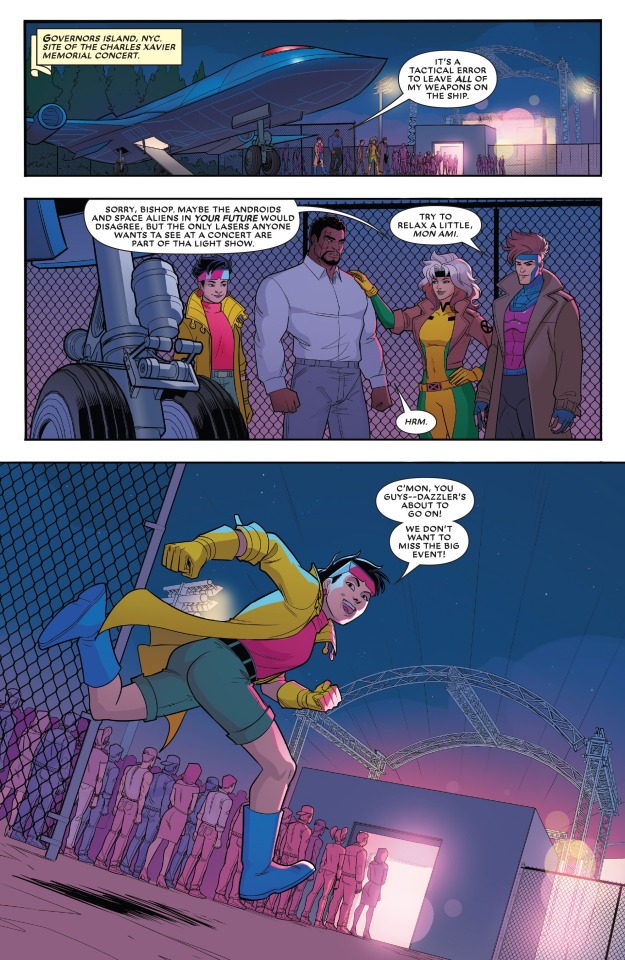




Jubilee, Bishop, Rogue and Gambit go to the concert to watch Dazzler's performance. However, Sinister's Nasty Boys turn up to kidnap Dazzler for a nefarious purpose. Fortunately, the X-Men foil the kidnapping attempt on Dazzler and show is able to go on.
This story in the comic is a prelude to the X-Men 97 cartoon.
X-Men 97 #1, 2024
#wednesday spoilers#Jubilee#Jubilation Lee#Bishop#Lucas Bishop#Rogue#Anna Marie#Gambit#Remy Lebeau#X Men#XMen#Dazzler#Alison Blaire#X Men 97#Ruckus#Clement Wilson#Slab#Kris Anderson#Gorgeous George#George Blair#Hairbag#Michael Suggs#Vertigo#Nasty Boys#XMen 97#marvel
129 notes
·
View notes
Text


wanted to finish this before i get to the more important stuff i need to do. anyway 4 way sexual abuser venn diagram
#nnstuff#nnart#nnoc#rape tw#csa tw#sa tw#teenage mutant neglected turtles#neglected art#clement#pep strong#desiree#kiln#tmnt abe#tmnt splinter#tmnt bishop#tmnt blythe
45 notes
·
View notes
Text
What's in my OCs bag!?
I want to do this too bc I can. Inspo from @vxntxque. I didn’t know who to choose so I put them all in a generator
Dani L: Chanel perfume, lipstick, lip gloss, fine liner pen, car keys, scrunchies, spare jewellery, flask from Fleur, make-up pouch, face wipes, hand sanitiser, whatever the latest iPhone is
Tara: Her grandfather’s camera always, notepad and multipack of pens she has to repurchase monthly because she’s always losing them, camera film, address book, pepper spray (she lives in NY), gum
Cam: scrunchie, calculator, notebook, special powder, headphones, rolling paper, embroidery thread
Owen: Dice, quill and ink, one of Reggie’s wooden figures, chocolate frogs and Anna’s shortbread, spare bag strap
4 notes
·
View notes
Photo

The Letters of Paul the Apostle to the Gentiles
Paul was a member of the Jewish Pharisees in the 1st century CE, who experienced a revelation of the resurrected Jesus Christ. In this vision, Jesus commissioned him to be the apostle (herald) to the Gentiles (non-Jews). After this experience, he traveled widely throughout the Roman Empire, spreading the "good news" that Jesus would soon return from heaven and usher in the kingdom of God on earth.
In the New Testament, we have 14 letters traditionally assigned to Paul, but the scholarly consensus now recognizes that of the 14, seven were written by Paul:
1 Thessalonians
Galatians
Philemon
Philippians
1 & 2 Corinthians
Romans
2 Thessalonians, Ephesians, and Colossians remain debatable among some scholars. The other major letters (1 &2 Timothy and Titus) were most likely written by disciples of Paul’s, using his name to carry authority. The letters that have survived range between 52 and 60 CE, and although we cannot pinpoint when Paul’s letters were collected, Clement, a bishop in Rome in the 90s CE, quoted from 1 Corinthians.
The Nature of the Letters
We understand these letters to be circumstantial. They were not written as systematic theology or as treatises on Christianity. The letters are responses to specific problems and circumstances as they arose in his communities. Paul spent time in cities establishing a group and then moved on. He received letters and sometimes reports with detailed questions or advice on how to settle conflicts. Unfortunately, when Paul’s letters were saved and circulated, the original letters from the communities were not preserved. The reconstruction of the original problems can only be determined by Paul’s responses.
Known as the most famous convert in history (from the Acts of the Apostles), Paul did not actually undergo conversion. Conversion assumes changing from one religious system to another, but at the time, there was no Christian system for him to convert to. Paul himself was ambiguous when it came to his self-identity:
To the Jews I became like a Jew... To those under the law I became like one under the law (though I myself am not under the law) ... To those not having the law I became like one not having the law (though I am not free from God’s law but am under Christ’s law) ... I have become all things to all people. (1 Corinthians 9:20-22)
In relation to what happened to Paul, it is better to follow what he says, in that he was 'called'. This is the tradition of the way in which the Prophets of Israel were called to their individual missions.
I want you to know, brothers and sisters, that the gospel I preached is not of human origin. I did not receive it from any man, nor was I taught it; rather, I received it by revelation from Jesus Christ. (Galatians 1:11-12).
Paul argued that this experience gave him as much authority as the original circle in Jerusalem (Peter, James, and John). Paul’s call to be the Apostle to the Gentiles was shocking because, as he freely admitted, he had previously "persecuted the church of God" (Galatians 1:13). He never really explained what he did, nor why he did it. It is in Paul’s letters that the name Jesus is combined with Christ, the Greek for the Hebrew messiah ("anointed one"). Understood as a title, "Jesus the Christ", it became common as a phrase that indicated his identity and function.
Continue reading...
43 notes
·
View notes
Text

THURSDAY HERO: Clement and Andrey Sheptytsky
Clement and Andrey Sheptytsky were leaders of the Ukrainian Greek Catholic Church who spoke out against the Nazis and saved dozens of Jews after the Nazi takeover of Ukraine.
The brothers were born in a small village called Prylbychi to an aristocratic family featuring many prominent leaders of the Ukrainian Greek Catholic Church. Andrey, the oldest, was born in 1865 with the title “Count.” Clement was born four years later. The boys received their primary education at home, and then went to high school in Krakow.
Young Andrey, already 6’10”, got to know some Jews while attending school in Krakow, and became interested in their religion. He learned Hebrew, and maintained his close ties with the Jewish community over the ensuing decades.
After graduating from high school, Andrey joined the Austro-Hungarian army, but got sick soon after and had to return home. As his health improved, Andrey attended law school and received his doctorate in 1888. During that time he traveled throughout Europe, and was granted an audience with Pope Leo XIII at the Vatican.
Despite his promising law career, Andrey felt a vocation to serve God and, despite fierce opposition from his father, he entered the Jesuit Seminary in Krakow. He was ordained as a priest in 1892 and over the ensuing years rose to increasing prominence in the Ukrainian Greek Catholic Church. In 1899, Andrey was nominated by Emperor Franz Joseph as a Bishop, and the nomination was approved by the Pope. Andrey was consecrated as a bishop, and a year later, at the age of 36, he became Metropolitan Archbishop of Lviv, the largest city in western Ukraine. Andrey traveled throughout the country making pastoral visits, and was welcomed warmly by local Jews. Sometimes they would even greet him with a Torah scroll.
Meanwhile, younger brother Clement was following a similar career path, but on a different timeline. Clement also went to law school, but instead of practicing law he returned home to take care of his aging parents, and manage the family’s vast real estate holdings.
In 1911, almost twenty years after his older brother became a priest, Clement also chose a life of religious devotion. He enrolled in theological seminary and was ordained a priest in 1915. He entered the Holy Dormition monastery, and became its prior in 1926. The brothers remained very close, and in 1937 when Andrey became sick, Clement left his monastery and moved to Lviv to care for him.
As the Nazi party rose to power in the 1930’s, Andrey was the first (and sadly, one of the only) European church leaders to speak out forcefully against persecution of the Jews. He issued an important pastoral letter, “Thou Shalt Not Kill” to protest Nazi violence. As First Bishop of the Ukrainian Greek Catholic Church he sent a letter to Hitler and Himmler protesting their treatment of Jews. His letter was ignored, so Andrey took action. He directed his clergy and lay leaders to save Jews by hiding them in churches, providing for their basic needs, and helping them escape to safety.
In addition to hiding Jews in Ukrainian Greek Catholic churches, Andrey and Clement took 16 Jews into their own home and cared for them until the area was liberated by the Red Army in 1944. One of those Jews was David Kahane, who became chief rabbi of the Israeli air force and later chief rabbi of Argentina. Rabbi Kahane said, “Andrey Sheptytsky deserves the undying gratitude of the Jews and the honorific title ‘Prince of the Righteous.”
Andrey, who had been in poor health for many years, died in 1944 and is buried in St. George’s Cathedral in Lviv. Church historian Jaroslav Pelikan wrote, “Arguably, Metropolitan Andrey Sheptytsky was the most influential figure… in the entire history of the Ukrainian Church in the twentieth century.”
After the war, Clement was arrested by Soviet authorities and pressured to renounce his faith. He refused to do so, and was sentenced to eight years in prison, which amounted to a death sentence for the frail, 74 year old man. While incarcerated, he ministered to other inmates, cared for those who were sick, and shared his food with the weakest among them. He died in Vladimir Central Prison in 1951, at age 81.
The brave brothers received many posthumous honors. Clement was beatified in 2001 by Pope John Paul II, and was honored as Righteous Among the Nations by Israeli Holocaust Memorial Yad Vashem. Andrey received the honorific “Venerable” for his life of heroic virtue by Pope Francis in 2015. In their home town of Prylbychi, a monument to the Sheptytsky brothers was erected in 2011.
For bravely saving Jews from the Nazi death machine, and ordering their flock to do the same, we honor the holy Sheptytsky brothers as this week’s Thursday Heroes.
27 notes
·
View notes
Text
The Name List
Organized from A-Z (yes I will add more names whenever I find more I like, probably in reblogs)
I currently have 1035 names (and that’s only including the first names. I have a list of last names, too.)
Angel, Atticus, Atlas, Apollo, Ares, Athena, Achilles, Artemis, Adonis, Avery, Aubrey, Aubry, Aceline, Ashlynn, Aislinn, Anjanette, Arthur, Archer, Addison, Arrietty, Amity, Autumn, Alastor, Alastair, Alasdair, Alistair, Alison, Arren, Arin, Astra, Aoife, Adalyn, Adeleine, Astoria, Agnes, Angus, Abigail, Ann, Anne, Ambrose, Adeline, Avarsel, Agatha, Ari, Azariah, Aniyah, Armani, Anastasia, Annabelle, Adah, Adelaide, Avis, Amelia, August, Axel, Adelina, Amir, Amin, Ayala, Arne, Averett, Adil, Astro, Ava, Anti, Ailun, Akemi, Asahi, Akari, Asako, Atsuko, Azumi, Aka, Aren, Akko
Blossom, Bambi, Babs, Bo, Bella, Blair, Bea, Bonnabel, Badeea, Betty, Bailey, Boris, Bee, Bugs, Blaise, Benjamin, Bog, Buford, Beatrice, Bryce, Bryan, Bazil, Brutus, Bellamy, Brigitte, Bailee, Bailey, Bao, Belladona, Belladonna, Bell, Bill, Bishop, Bones, Boneothy, Benno, Behemoth, Barry, Bellynn, Bowie, Bunki
Clover, Canyon, Cleo, Cameron, Celestial, Celestino, Ciro, Camilo, Cain, Charlotte, Clara, Corey, Cin, Charlie, Cassidy, Chiara, Callista, Cisco, Cynthia, Casper Clinton, Celestina, Clement, Christopher, Cornelius, Clifford, Claudius, Carey, Carrie, Coatl, Cyrus, Cyril, Cecil, Caisus, Castiel, Calla, Cosmos, Cherry, Cheryl, Crowley, Crow, Cassius, Cliodna, Clíodhna, Cliona, Conan, Cordelia, Calypso, Cas, Cillian, Chiyo, Chiaki, Chihiro, Calcifer
Danny, Darlene, Dex, Dot, Diana, Daphne, Demeter, Daedalus, Daeddel, Darphel, Dawn, Derrick, Derek, Dravan, Dravid, Drae, Dallas, Dimas, Dominic, Damien, Drew, Delilah, Dakota, Darian, Darius, Darwin, Devan, Darla, Dagmar, Daelyn, Dale, Dae, Dacey, Desmond, Dabria, Daniel, Daniela, Danialla, David, Davis, Donnel, Dennis, Demitrius, Delaney, Daiki, Daiyu
Everest, Emery, Ember, Elliott, Elliot, Earlana, Eliseo, Ezequiel, Emie, Evan, Eloise, Eric, Emmet, Elizabeth, Eugene, Ethan, Eret, Ester, Elias, Eos, Ellis, Edwin, Ebony, Elijah, Eliza, Enzo, Elissa, Edward, Eddalyn, Esther, Eda, Edalyn, Edalynn, Edison, Eddison, Estervan, Emma, Eden, Erfan, Eun-hae, Erytheia, Egan, Errol, Eiichi, Eiji, Eriko, Etsu, Etsuko, Eiichiro, Ezume
Flint, Finn, Fae, Fred, Fritz, Fang, Frankie, Frank, Fermin, Freddie, Freddy, Finley, Freya, Fai, Felix, Freda, Faolan, Frey, Feylynn, Faelynn, Failynn, Felipa, Febby, Febbie, Febie, Feby, Flynn, Fuji, Feiyu, Fukiko, Fumitaka, Fumito, Fuyuko
Griffin, Garnet, Gothi, Gertrude, Gabe, Grant, Giovanni, George, Gage, Gregory, Gabriel, Gabrielle, Guy, Gilbert, Guadalupe, Gerry, Grey, Gray, Gia, Grace, Gracian, Gracis, Gracie, Gretel, Gideon, Griffilow, Ghost, Ghazaleh, Gavin, Gryphon, Griffith, Goliath, Grayson, Greyson
Harmony, Hannah, Harlei, Harlie, Haritha, Haris, Harry, Harlan, Harvey, Hadrian, Harley, Hari, Harlow, Howl, Hank, Harper, Herbert, Humphrey, Hestia, Helios, Hephaestus, Hollis, Hunter, Hero, Henry, Helda, Hajar, Hasta, Hadis, Howard, Howie, Hannan, Haoyu, Hisako, Hachi, Hiroto, Hoshiko, Honoka, Hiroshi, Hiro, Haitao, Hamako, Haruhi, Harue, Hayate, Hide, Hideyo, Hidetaka, Hisaye, Hisayo, Heiji, Higari
Ivy, Ivey, Ivo, Ida, Iris, Ilyssa, Illy, Irene, Iren, Isaiah, Ira, Idelle, Ivan, Illaoi, Isabel, Isabell, Isabelle, Isobell, Isabella, Ismelda, Io, Ismael, Isolt, Icarus, izuru, Isamu, Itona, Ichiro, Ichiko, Ichigo, Isoko, Ishiko, Isaye, Inari, Ikuko, Itsuki, Itsuko, Inosuke
Juniper, Jupiter, Jinx, Jamie, Javier, Josiah, Joan, Jake, Julia, Jamil, Jamila, Jesse, Jessie, Jess, Jasper, Janus, Jordan, Joshua, Julian, Juilliard, Julius, Juliana, Jeremiah, Jace, June, Junebug, Jazzy, Jackson, Jackie, Jackalynn, Jodie, Johnnie, Jan, Jaime, Jason, Jorge, Justin, Justice, John, Jay, Janelle, James, Jennifer, Jillion, Jill, Jana, Jonah, Jaycee, Jaxen, Junpei, Jona, Jun, Jin
Kenneth, Kat, Kas, Kris, Keith, Kingston, Kaeton, Kingsley, Kent, Katherine, Kyle, Knox, Kristen, Kristin, Kristeen, Kylie, Kaylee, Kamila, Kehlani, Kendall, Kerry, Kry, Kenny, Kath, Kathleen, Krow, Kix, Kedrick, Kennon, Klaus, Killian, Korallia, Krank, Kaz, Kaede, Kirara, Katsuhiko, Keisuke, Kanako, Kenji, Kaemon, Kamin, Katsu, Kaki, Kazane, Kazuyuki, Kazushige, Kenta, Kei, Kimi, Kin, Kohako, Koichi, Kota, Koji, Koharu, Kosuke, Kuma, Kumi, Kuniko, Kuniyuki, Kideko, Kazuko
Lullaby, Lotte, Lapin, Lorelei, Loralai, Lorelai, Luna, Lily, Lucy, Lee, Liana, Lola, Lethe, Lance, Laurence, Luther, Luca, Lennon, Logan, Lennox, Ilias, Liu, Lui, Luis, Lefu, Liam, Lyall, Lowell, Luella, Leona, Leonie, Leon, Lev, Lincoln, Lin, Link, Laverna, Lazarus, Lewis, Louis, Louise, Levi, Leslie, Lesley, Leilana
Marley, Marlai, Mei, May, Mae, Marceline, Marshall, Marshalee, Millie, Mallorie, Marcela, Melanie, Maddison, Mary, Mirabel, Marsh, Murphy, Montgomery, Mildred, Memphis, Molly, Maverick, Maurice, Muiris, Morgen, Max, Moses, Marion, Merrill, Monroe, Melanthios, Maxwell, Matias, Melissa, Maëlle, Marlene, Meredith, Maybelle, Margaret, Maeve, Moss, Mara, Maria, Myrtle, Mona, Mark, Markus, Michael, Micheal, Michelle, Mahsa, Minoo, Mehdi, Mohammad, Matin, Morpheus, Marlowe, Monica, Marilia, Magnus, Malachi, Malachy, Maggie, Makoto, Megumi, Mio, Maemo, Maemi, Masa, Masaaki, Masashi, Michi, Midori, Michinori, Momo, Motoko
Natasha, Noelle, Noni, Neville, Nixon, Neda, Natalio, Ned, Nausicaä, Noxis, Nova, Nathen, Newt, Noah, Nash, Nox, Nathara, Nathaira, Nathair, Nyoka, Nagisa, Nathan, Nate, Nik, Nick, Naohiro, Naoko, Nara, Natsu, Naoya, Nishi, Nobuko, Nori
Olindo, Ollie, Oliver, Ophelia, Odysseus, Orion, Osono, Oxen, Onyx, Otto, Ottoline, Otitile, Ottavia, Octavio, Olivia-Marie, Oakley, Omar, Olivia, Oscar, Octavian, Octavia, Oz, Octavius, Otta, Oisin, Orson, Orlos, Osiris, Owen, Odalis, Odell, Ozuru
Penelope, Patton, Paddy, Percy, Paulie, Page, Pazu, Phoebe, Phebe, Prairie, Porter, Parlay, Pally, Piper, Parker, Payton, Phil, Paul, Philip, Pyre, Piers, Phylis, Patricia, Payne, Payneton, Pip
Quinn, Quincy, Quil, Quinley, Quinstin, Quinlan, Quillen, Quavon, Quaylon, Quensley, Qing, Qrow, Quilla, Quianna, Quita, Qiao, Quinella, Queenie, Qaylah, Qailah, Qitarah, Quenby, Qadira, Qudsiyah, Quan, Qian, Quinby, Quella
Roseline, Raul, Rahul, Rafael, Roque, Rogelio, Remmy, Rei, Rey, Ray, Robin, Ro, Reika, Rowen, Rowan, Rose, Rosie, Ralsei, Riley, Remus, Rosalyn, Rosalin, Rosaline, Renata, Ron, Rat, Ratt, Reef, Roxy, River, Reed, Rufus, Robbie, Renee, Rivia, Ross, Rex, Ruth, Rosemary, Rosabe, Rosabee, Rosabell, Rosabelle, Rosabel, Rai, Rain, Rosella, Rosalie, Rhody, Robert, Raelinn, Rebane, Ren, Rollin, Ralph, Roxanne, Rox, Roderick, Reginald, Reggie, Rio, Ryu, Ryo, Ryoji, Rinmaru
Sage, Sam, Syd, Selkie, Storig, Sal, Sirius, Summer, Susie, Scott, Sunni, Sosuke, Sophie, Satsuki, Sheeta, San, Sulley, Sully, Savannah, Sappho, Selene, Shaw, Sean, Seán, Shaun, Sawyer, Sabrina, Sebastian, Shane, Stan, Socks, Snom, Stolas, Spencer, Sammie, Stevie, Samus, Sarff, Sullivan, Seth, Susiebell, Susiebelle, Sadreddin, Shellaine, Sverre, Saoirse, Sylvania, Sanae, Silas, Sumi, Shiori, Shinzu, Sile
Toby, Tobias, Teddy, Ted, Tomas, Thomas, Tomothy, Tyche, Taiga, Tundra, Tracy, Timothy, Troy, Tatum, Tommie, Tommy, Theia, Tae, Trix, Trixy, Thanathos, Tod, Todd, Toddy, Tora, Torie, Theodore, Theo, Theophania, Talos, Thanatos, Teddy, Tomohito, Tazu, Tanjirou, Touya
Ulysses, Urijah, Uriyah, Urina, Ukiah, Ulnar, Ursula, Ulric
Virgil, Vanessa, Vito, Venacio, Vylad, Veronica, Valentina, Violet, Velma, Venus, Verna, Veld, Victoria, Victorie, Vinyl, Vincent, Vasuki, Vex, Valor, Valentine, Valerie, Valeria, Valerius, Vitoria, Vic, Victor, Vik, Vikktor, Viktor, Vick, Vicky, Vicke, Vickie, Vidya
Wynn, Willow, Warren, Wilbur, Wylie, Will, Walle, Whisp, Wade, Wendell, Wendy, Willard, Wes, Wallace, Wilber, Wyatt, Wybie, Wynnie, Wennie, Winnie, Wynnston, Wynston, Wynsten, Wiles
Xenophon, Xuan, Xio, Xori, Xanthos, Xander, Xavier
Yen, Yukio, Yae, Yoko, Yume, Yaeko, Yui, Yuzuki
Zane, Zana, Zion, Zachary, Zach, Zachariah, Zander, Ziana, Zoe, Zula, Zenix, Zenith, Zaharia, Zaria, Zack, Zakaeia, Zara, Zakaria, Zev, Zaira, Zanata
#my posts#character names#name suggestions#name ideas#name list#names#trans#transfem#transmasc#transgender#nonbinary#genderfluid#genderqueer#agender#genderflux#bigender#demigender#demiboy#demigirl#if you want names#i got em#like a fuckin fae#takin whatever names i like
147 notes
·
View notes
Text
I know it's October but the plotbunny won't leave so:
Broke: Santa Claus is an immortal, magical being who classifies children into "naughty" and "nice", flies in a sleigh drawn by magical flying reindeer, and drinks Coca-Cola.
Woke: St. Nicholas, former Bishop of Myra, was given the gift of a supernaturally long life by God in order to show generosity and the love of Christ to children at Christmas each year. He's frustrated about how his legend has spiraled out of control, eclipsing the true purpose for the holiday, and would probably punch Clement Moore in the face if he had the chance - but still serves faithfully regardless, awaiting the day God finally calls him home.
18 notes
·
View notes
Text

THE DESCRIPTION OF SAINTS THOMAS MORE AND JOHN FISHER Feast Day: June 22
"If we lived in a state where virtue was profitable, common sense would make us saintly. But since we see that avarice, anger, pride and stupidity commonly profit far beyond charity, modesty, justice and thought, perhaps we must stand fast a little, even at the risk of being heroes." -Thomas More
"Penance is a needful thing to the sinner, who desires to recover health of his soul. And, in doing penance, there be three things to be considered: serious compunction of heart, confession of mouth and satisfaction by deed." -John Fisher
John Fisher and Thomas More are the most outstanding English martyrs who were killed during the persecution of King Henry VIII.
The problem started in 1527, when Pope Clement VII refused to declare null the King's marriage with Catherine of Aragon, his spouse for 18 years. The king who wanted to have a son from Anne Boleyn, was maddened by the denial and separated from Rome.
In 1534, with the Act of Supremacy, he appointed himself the sovereign of the Church of England, and began persecuting those who remained Catholic. The Martyrs of England, as they are known, were tortured in a barbarous manner. Some were put on the rack and dismembered; others were hanged and eviscerated while still alive.
John Fisher, the bishop of Rochester, was imprisoned in Tower Hill after he refused to acknowledge Henry VIII as the supreme head of the Church of England and for upholding the Catholic Church's doctrine of papal supremacy. He was beheaded on June 22, 1535 at the age of 65, and his head was displayed on London Bridge for several days. He died with the Holy Gospel in his hands for pronouncing words of pardon for his executioner.
After him, Sir Thomas More, the Lord High Chancellor of England, preferred to disobey the king rather than God. A devout Catholic, father of four children and prestigious lawyer, in 1527 he refused to support Henry VIII's claim for a divorce.
Five years later, he resigned from his office rather than separate from the Catholic church. He was convicted of treason and beheaded on July 6, 1535 at Tower Hill at the age of 57.
More is widely quoted as saying (to one of the officials): 'I pray you, master Lieutenant, see me safe up and for my coming down, let me shift for my self.'
Before his death, he said: 'I am the King's servant, but God's first.'
After he had finished reciting the Miserere (Psalms 51) while kneeling, the executioner reportedly begged his pardon, then More rose up merrily, kissed him and gave him forgiveness.
23 notes
·
View notes
Text
"Angelberga, wife of Louis II, had a very active role both during her reign and her widowhood. She is considered as an extraordinarily charismatic figure, for she embodied all the aspects of a queen’s powers: political, relational and patrimonial."
— Roberta Cimino, Italian Queens in the Ninth and T3nth Centuries (PHD Thesis, University of St Andrews, 2014) / Patricia Skinner, Women in Medieval Italy 500-1200
"Angelberga’s career has received a certain amount of attention from scholars. When she married Louis II she obtained land from her husband in eastern Lombardy and western Emilia, as her will of 879 shows. She and Louis became the heads of a government which moved round with them, and it is clear that she shared in his power. Odegaard cites her role in diplomatic missions and in warfare as evidence of her prominence. She also intervened in disputes between Louis and his brother Lothar, as well as between the latter and the pope. Her relationship with Pope John VIII was particularly close, and several extant papal letters were addressed to her. In 874 she was commended into papal protection.
Angelberga and the two monasteries of St Salvator at Brescia (the royal convent) and St Clement Casauria (founded in 873) were the only recipients of large land donations from Louis. Louis died in 875 without a son. In his last years his nobles, ‘regarding Engelberge as hateful because of her insolence’, had [unsuccessfully] petitioned him to divorce Angelberga in favour of the daughter of the count of Siena. This was clearly owing to the fact that she had only two daughters by Louis, Ermengard, who went on to control St Salvator, and Gisela, who predeceased her parents in 868. However, her position was much stronger than such a challenge suggests. Bougard points out that of eighteen precepts issued by Louis between 855 and 874, eight were addressed to Angelberga. She was responsible for the foundation of the female house of St Sistus in Piacenza, and her position as a powerful patron is clear. She also controlled the royal house of St Salvator/St Julia at Brescia. Both houses were to function as places of refuge for her and her daughter, if necessary, reflecting earlier patterns of monastic foundations with protective duties towards female kin. Besides her ecclesiastical contacts, Angelberga also worked for her own family. Her kinsman Suppo was recompensed for his mission to Constantinople in 869/870 with the duchy of Spoleto, which probably owed as much to his kinship with the empress as to his work there. Angelberga also procured the deposition of the bishop of Piacenza, Seufrid, in favour of her nephew Paul, provoking a reaction from Pope Nicholas I (although the Liber Pontificalis is silent on the issue)."
#and naturally chroniclers hated her for it#historicwomendaily#angelberga#italian history#9th century#louis ii of italy#carolingian period#my post#women in history
16 notes
·
View notes
Note
Clemente but with his hair untied
Acid reacting all starstruck in the background
He should cut his hair but tht would look like Cardinal Ryu

13 notes
·
View notes
Photo




Saint of the Day – 23 November – St Clement of Metz (3rd-4th Centuries) The 1st Bishop of Metz, now in France, Miracle-worker. Also known as Clemens and The Dragon Slayer.
(via Saint of the Day – 23 November – St Clement of Metz (3rd-4th Centuries) the Dragon-slaying Bishop – AnaStpaul)
9 notes
·
View notes
Text
SAINT OF THE DAY (January 7)

Saint Raymond of Penafort, a Dominican priest who worked to aid Christian captives during the era of the Crusades and also helped organize the Church’s legal code, will be celebrated liturgically on January 7.
A contemporary of Saint Thomas Aquinas, he inspired the theologian to write the “Summa Contra Gentiles” for the conversion of non-Catholics.
At least 10,000 Muslims reportedly converted as a result of St. Raymond’s evangelistic labors.
Descended from a noble family with ties to the royal house of Aragon, Raymond of Penafort was born during 1175 in the Catalonian region of modern-day Spain near Barcelona.
He advanced quickly in his studies, showing such a gift for philosophy that he was appointed to teach the subject in Barcelona by age 20.
As a teacher, the young man worked to harmonize reason with the profession and practice of Catholic faith and morals.
This included a notable concern for the poor and suffering.
Around the age of 30, the Spanish scholar went to study secular and Church law at Bologna in Italy.
He earned his doctorate and taught there until 1219, when the Bishop of Barcelona gave him an official position in the diocese.
During 1222, the 47-year-old Raymond joined the Dominican Order in which he would spend the next 53 years of his remarkably long life.
As a penance for the intellectual pride he had once demonstrated, the former professor was asked to write a manual of moral theology for use by confessors.
The resulting “Summa Casuum” was the first of his pioneering contributions to the Church.
Meanwhile, in keeping with his order’s dedication to preaching, the Dominican priest strove to spread the faith and bring back lapsed and lost members of the Church.
During his time in Barcelona, Raymond helped Saint Peter Nolasco and King James of Aragon to establish the Order of Our Lady of Mercy, whose members sought to ransom those taken captive in Muslim territory.
During this same period, Raymond promoted the Crusades through preaching, encouraging the faithful to defend their civilization from foreign threats.
Pope Gregory IX called the Dominican priest to Rome in 1230, asking him to compile the Church’s various decisions and decrees into one systematic and uniform collection.
The resulting five books served for centuries as a basis of the Church’s internal legal system.
Raymond was the Pope’s personal confessor and close adviser during this time, and nearly became the Archbishop of Tarragona in 1235.
But the Dominican did not want to lead the archdiocese and is said to have turned down the appointment.
Later in the decade, Raymond was chosen to lead the Dominicans, though he did so for only two years due to his advancing age.
Ironically, however, he would live on for more than three decades after resigning from this post.
During this time, he was able to focus on the fundamentals of his vocation: praising God in prayer, making him known through preaching, and making his blessings manifest in the world.
Raymond’s later achievements included the establishment of language schools to aid in the evangelization of non-Christians.
Raymond of Penafort’s long pilgrimage of faith ended on 6 January 1275, approximately 100 years after his birth.
He was beatified by Pope Paul III in 1542. Pope Clement VIII canonized him on 29 April 1601.
His patronage extends toward lawyers in general and canon lawyers in particular.
6 notes
·
View notes
Text
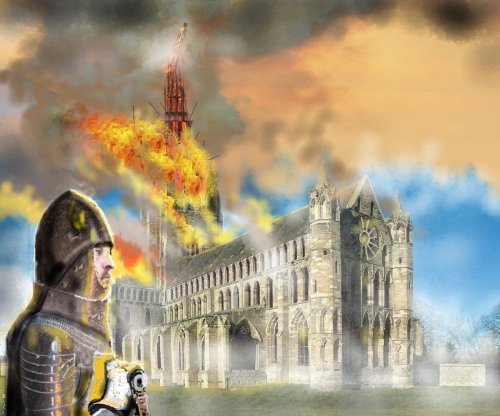


24th July 1394 saw the death Alexander Stewart, 1st Earl of Buchan AKA the Wolf of Badenoch.
Alexander Stewart, the Earl of Buchan, earned several nicknames during his lifetime given his loathsome reputation for murder, violence and fire raising, Many knew him as the Wolf of Badenoch while others referred to him as the Celtic Atilla. It has been questioned whether he was indeed Scotland’s vilest man.
The Wolf died on this day in 1394 at Ruthven Castle near Kingussie with legend claiming that he met his maker after playing chess with the devil. The story is perhaps a fitting end for a man who honed his reputation with a series of rampages through the north of Scotland and his terrifying appetite for destruction of his enemies.
He set fire to the towns of Forres and Elgin, where the cathedral was torched and chaplains and canons burnt out of their homes. It is believed that Pluscarden Abbey was also lit by the Wolf as he fought back against the influence of the Bishop of Moray. The driver for much of his rage was his marriage to Euphemia I, Countess of Ross, who was unable to bear him a legitimate heir and the church refused to end the marriage. However, he reportedly had seven children with his mistress, Mairead nighean Eachann, with other accounts claiming the Wolf fathered up to 40 offspring with other women.
The Wolf was powered by a toxic combination of anger and power which was gifted to him by his father, King Robert II, who made his son the Earl of Buchan in 1382 and the Crown’s chief law officer in the north of Scotland. The Wolf’s territory stretched from Moray to the Pentland Firth - with much of its people to feel the full force of this “avarious and cruel” according to one historian.
In 1390, by which time the Earl was bedding down at his secluded island home of Lochindorb Castle, the Wolf’s touch paper was lit when the Bishop of Moray, Alexander Bur, refused to annul his marriage. He was later to excommunicate the Wolf. The Earl was “exasperated....to such a degree of fury” that he was reduced key parts of his territory to ash.
In the month of May 1390 he descended from his heights and burn the town of Forres, with the choir of the church and the manse of the archdeacon, the next month he burnt the town of Elgin, the church of St Giles, the hospital of Maison-Dieu and the cathedral, with 18 homes of the canons and chaplains in the college of Elgin.
It is likely that the Priory of Pluscarden was burned at the same time with traces of fire lit still seen today in the building .
The Wolf, whose other homes included Drumin Castle near Glenlivet, Castle Garth near Glen Lyon, and Ruthven Castle near Kingussie, was prosecuted and punished by his father but ultimately absolved of his crimes and received back by the church.
According to accounts, Pope Clement V subsequently annulled the marriage in late 1392 after Countess Euphemia complained to Rome that her marriage was meaningless given the Wolf was cohabiting with another woman.
And so to this fateful day in history...or legend, you decide!
It is said he was visited by a tall man dressed in black and the pair played through the night, with a storm conjured when the visitor called “check” and “checkmate”.
In the morning, the Wolf was found dead in the banqueting hall and his men too found lifeless outside the castle walls.
Like all good legends there are differing versions of the story, the other was that the end “duel” was playing cards.
11 notes
·
View notes
Text



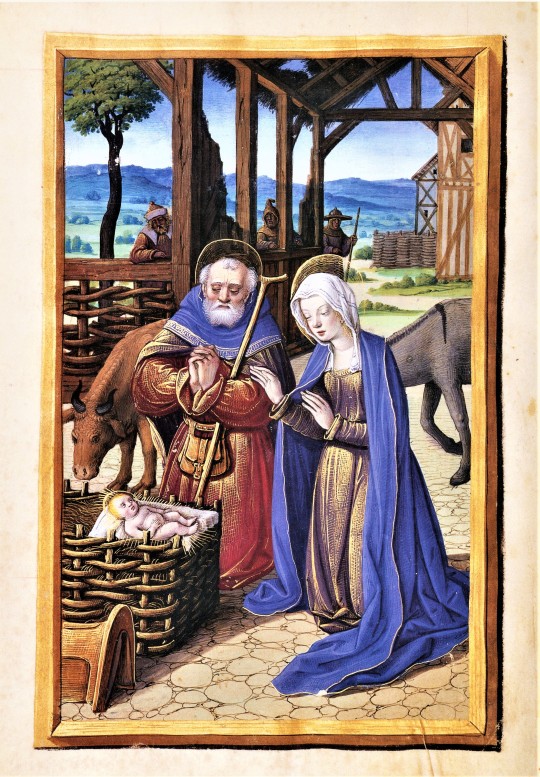

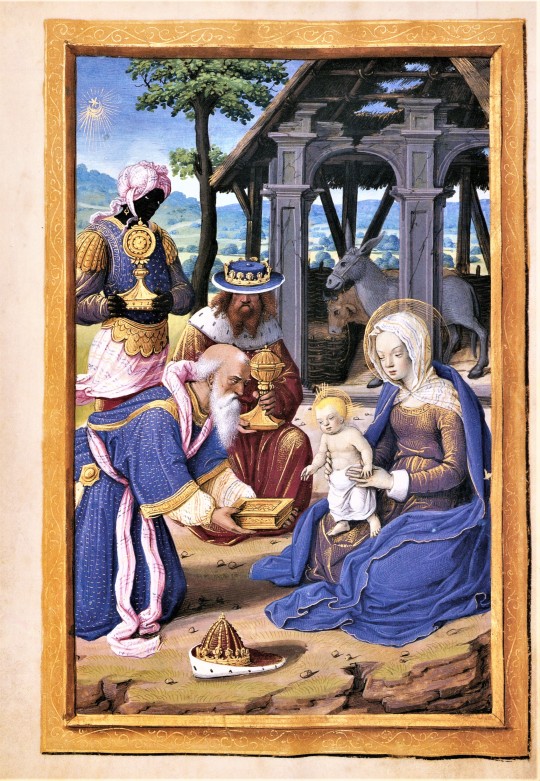

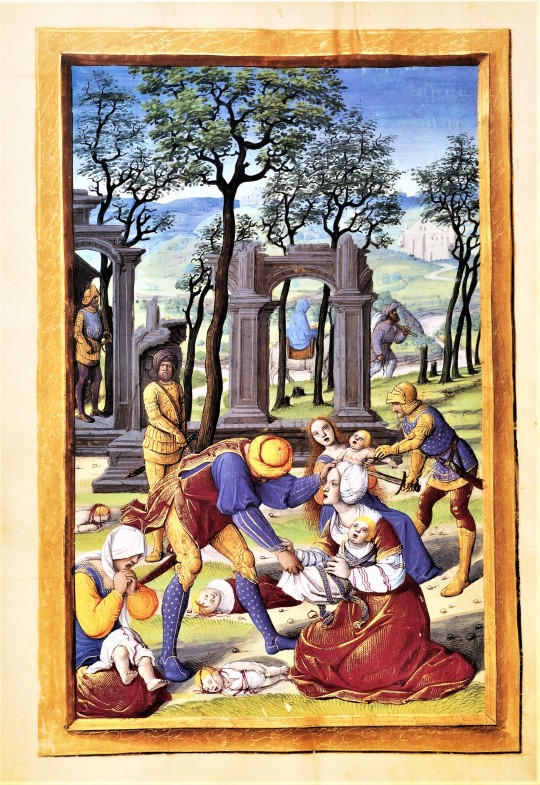
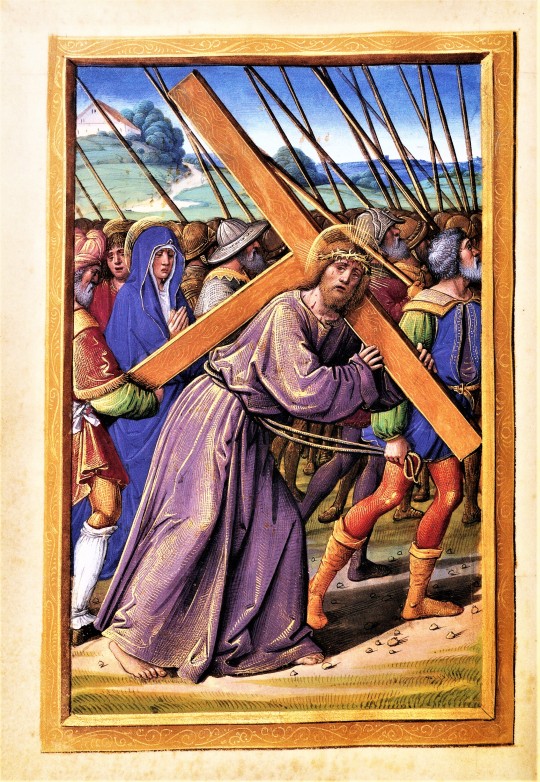

Milestone Monday
On this date, August 31 in 1535, King Henry VIII of England was excommunicated from the church by Pope Paul III. This was the culmination of a long series of conflicts and actions stemming from the king's desire to have his marriage to his first wife Catherine of Aragon annulled, which the previous Pope Clement VII opposed. This eventually led to a schism with the church in Rome and several excommunication proclamations by both Clement and Paul. Henry's confirmation as the Supreme Head of the Church of England in 1534, and then his execution of Bishop John Fisher in June of 1535, followed in July by the execution of Sir Thomas More, precipitated Paul III's excommunication order of August 31. On 17 December 1538 Pope Paul III issued a further bull renewing the execution of the August 31 bull, which had been suspended in a cautious hope Henry would repeal his behavior.
Henry was not always on the outs with Rome, and was in fact once considered a contemporary pillar of the church. In the early part of his reign, Henry was a devout and well-informed Catholic to the extent that his 1521 publication Assertio Septem Sacramentorum ("Defence of the Seven Sacraments") earned him the title of Fidei Defensor (Defender of the Faith) from Pope Leo X. One testament to his early piety might be seen in his probable ownership of this Book of Hours, known as The Hours of Henry VIII executed by the French miniature painter and manuscript illuminator Jean Poyet sometime between 1500 and 1503, and currently held by the Morgan Library in New York City. The images shown here are from "the Library's first monograph devoted to the oeuvre of a single illuminator," published by George Brazillier in 2000. Click on the Alt description of each image to view the titles.
View more Milestone Monday posts.
#Milestone Monday#milestones#Henry VIII#excommunication#Pope Paul III#The Hours of Henry VIII#Jean Poyet#Book of Hours#devotional art#illuminated manuscripts#Morgan Library#George Brazillier
34 notes
·
View notes